FORT BENNING, Ga. -- The 2010 David E. Grange Jr. Best Ranger Competition came to a close on Sunday evening, when the last teams standing following the three-day event had crossed the finish line.
More than 40 two-man teams began the quest for the title of Best Ranger, but only 25 can say they were able to complete the ultimate Army competition.
"It's kind of like the Super Bowl, the World Series, the Daytona 500, and the World Cup for the Army and the Ranger community," said Command Sgt. Maj. Dennis Smith, Ranger Training Brigade command sergeant major. "Just to finish it is saying a lot. These competitors are the best of the best."
The competition started with a four-mile buddy run, a 250-meter swim, and another three-mile run to their first obstacle course. Following the urban obstacle course, teams had to navigate their way across the camp to firing ranges to conduct a series of weapons skills events before moving out again on another buddy run. The day ended with a spot jump and concluded with an unknown distance foot march.
The grueling first day of events and more than 30 miles traveled eliminated nearly half of the competitors. Only 26 teams began the second day's events of completing Ranger skills stations that included rappelling, rope climbs, first aid, hand grenades and additional weapons skills challenges. The day ended with an overnight orienteering, or land navigation, course.
Competitors were in agreement that it was a relief to have made it past day one, and most were looking forward to the finish line after day three.
"It sucks, I'm not going to lie," said Staff Sgt. Keith Bach, representing 3rd Infantry Division.
"(The first day) was harder this year than last year," said Sgt. Michael Malchow, representing 75th Ranger Regiment. "We are getting stronger as we go on and hopefully we can get today over with and make up some ground as far as getting up there in the standings."
Day three began with the Darby Queen, an obstacle course laid out on a one-mile route. Upon completion of the course, teams constructed a poncho raft for use in the Helocast event. The Helocast event took the teams and their poncho raft over a pond and dropped them. Teams were required to utilize their poncho raft and swim to shore. The day finished with a water confidence test, canoe race, and the final buddy run to the finish line.
"Over the past three days the competitors covered more than 60 miles on foot for over 60 hours without sleep, and very little food intake," said Capt. John Vickery, project officer for Best Ranger. "All those teams that completed the competition are really, really good teams. They represented their units well."
The winning team of Master Sgt.'s Eric Turk and Eric Ross, representing the U. S. Special Operations Command, raised their hands in celebration as they crossed the finish line.
"It feels pretty doggone good to be able to walk out with the trophy today," said Turk.
(S.L. Standifird is a journalist with the Joint Hometown News Service)



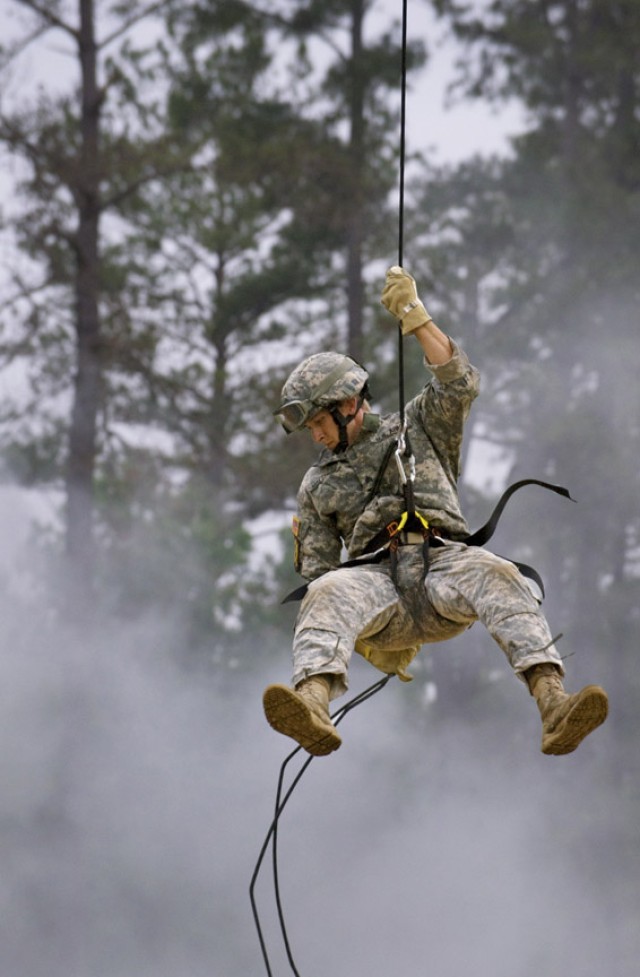


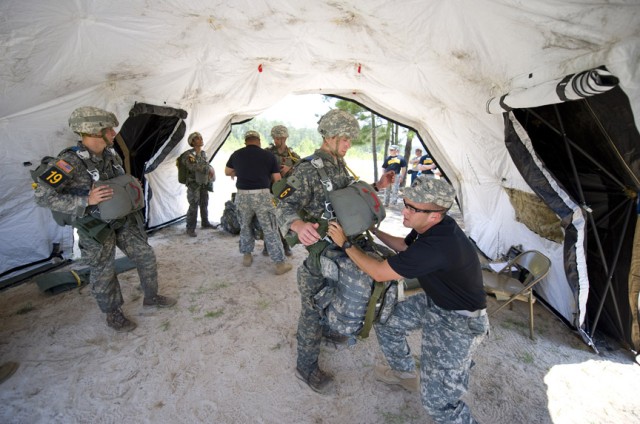
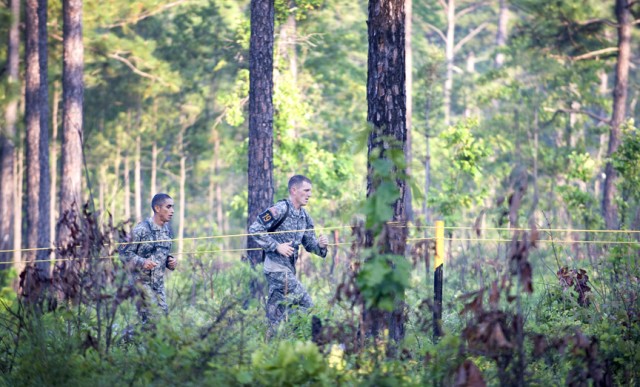




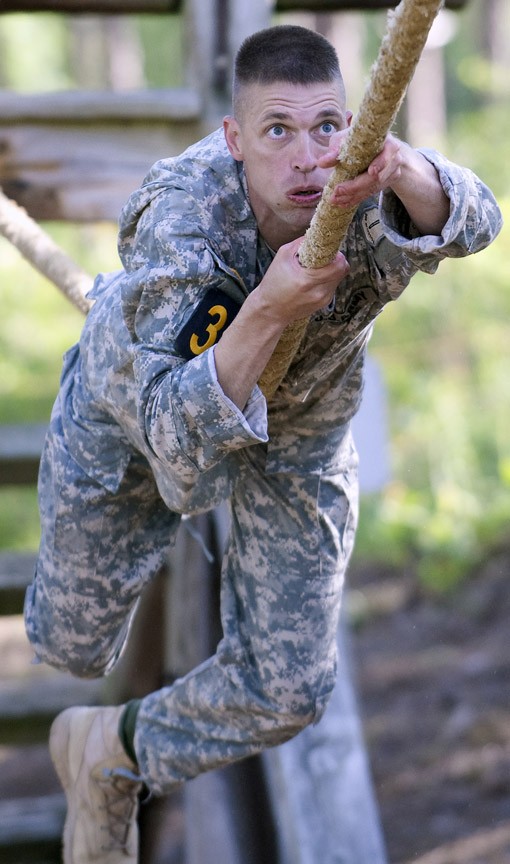
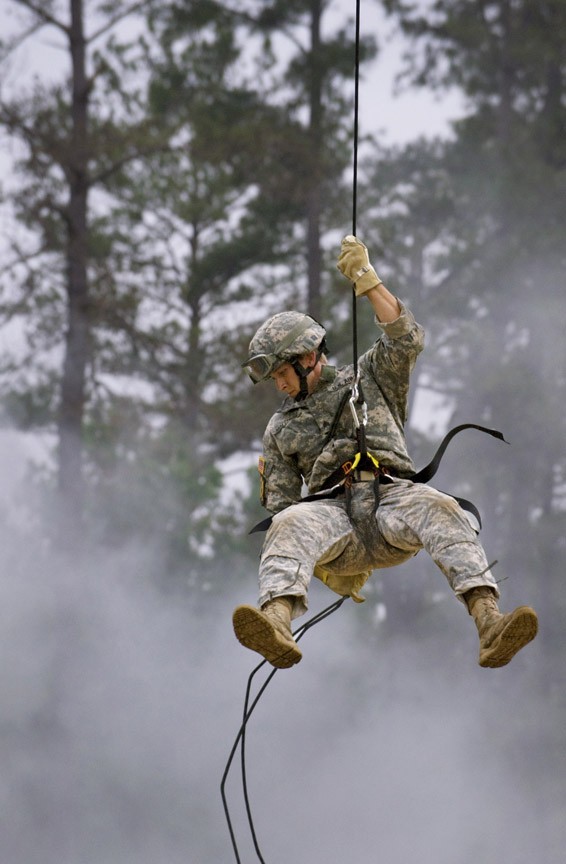
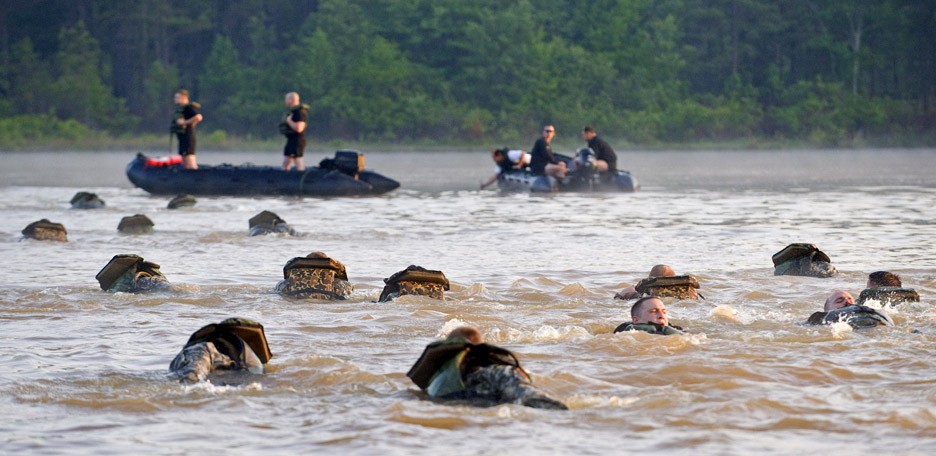
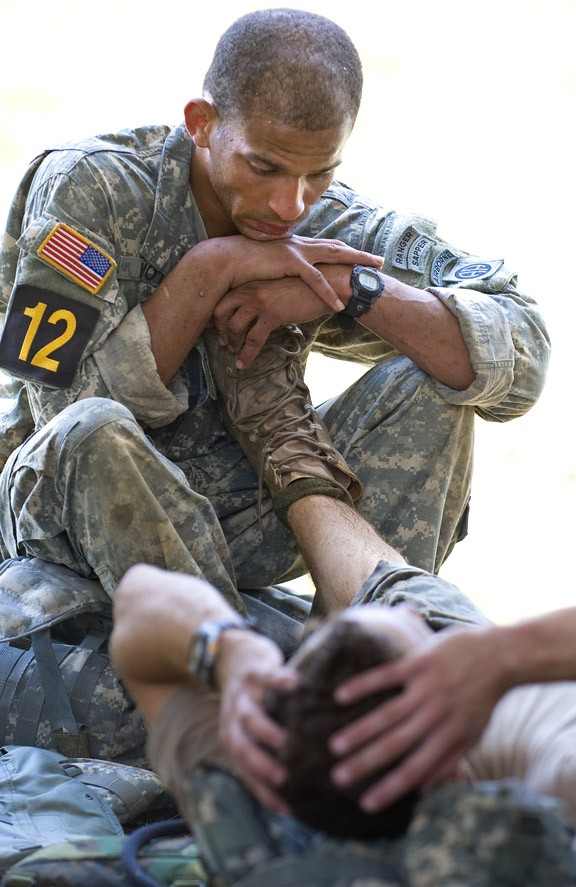
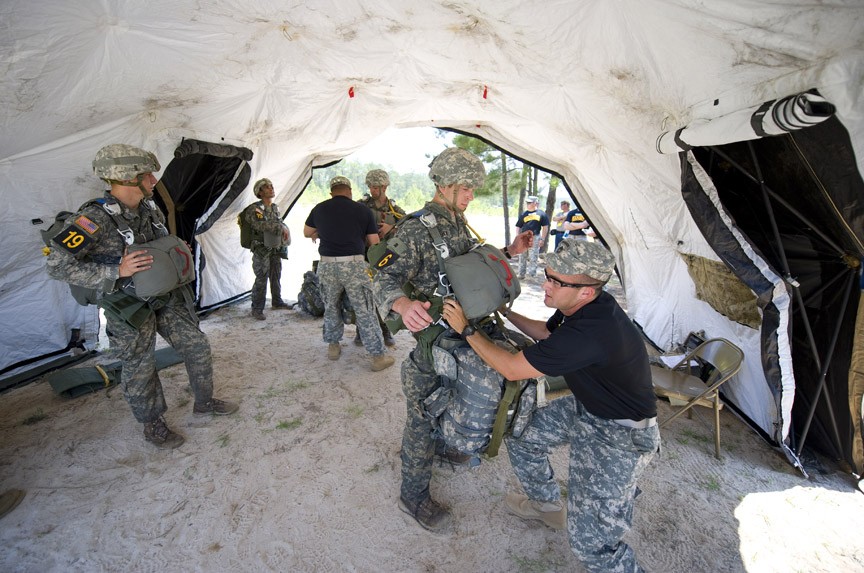



Social Sharing